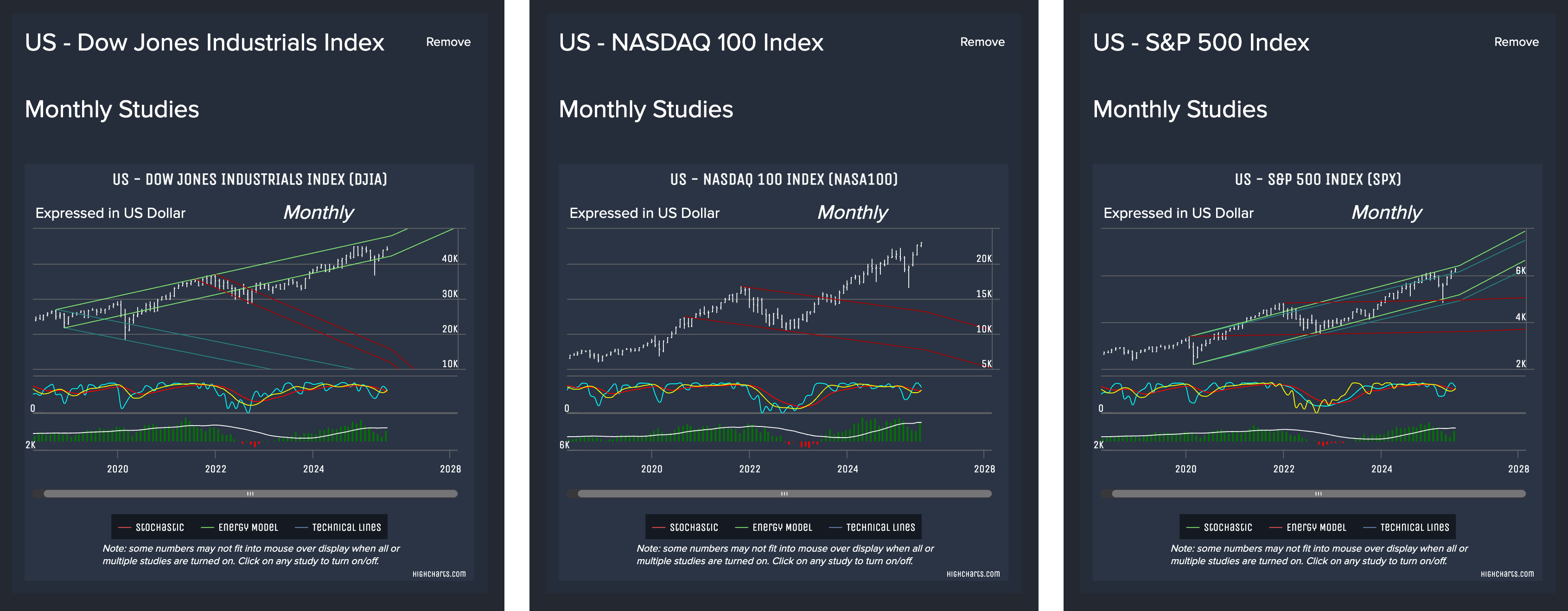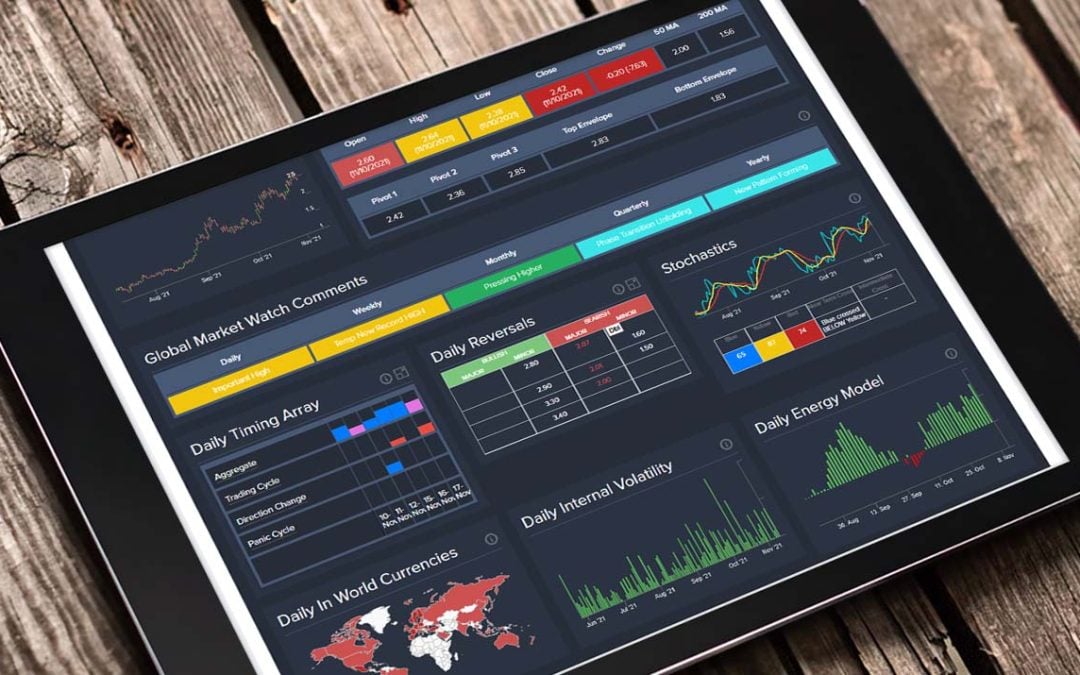Equities Bounce Back in the Second Quarter with Strong Closes Around the World
After some uncertainty loomed large in early part of 2025, global equities have largely surged in the first half of 2025. Looking at Q2 specifically, the Dow Jones Industrial Average (+4.98%), the S&P 500 Index (+10.57%), the NASDAQ Composite Index (+17.75%), the NASDAQ 100 Index (+17.64%), and the Russell 2000 Index (+8.11%) all closed the quarter in a fairly strong way.
As markets in the U.S. soared during the second quarter, the volatility index (VIX) naturally took a nosedive, closing the quarter down -24.91% vs Q1 (when it spiked +28.41%). The VIX is a popular measure of expected volatility of the US stock market, based on the S&P 500 Index.
In Europe, the STOXX Europe 600 Index has shown a slightly different picture over the first half of 2025 when compared to the S&P 500. Europe's benchmark index secured positive closes for both Q1 (+5.18%) and Q2 (+1.39%), while the U.S. benchmark closed Q1 down (-4.59%) before bouncing back in Q2.
Zooming in on Europe, the UK's FTSE 100 Index (+2.08%), Germany's DAX Performance Index (+7.88%), and Italy's MIB Index (+4.58%) all finished the quarter in positive territory, despite each having a down month in June.
One exception in Europe (globally, really) was France. The country's benchmark CAC-40 Index closed both June (-1.11%) and the second quarter (-1.60%) in the red.
In Asia, the Japanese NIKKEI Index (+13.67%), South Korea's KOSPI Index (+24.73%%), Hong Kong's Hang Seng Index (+4.12%) and China's CSI 300 Index (+1.25%) all finished the quarter strong.
In other key markets, the picture was no different. Canada's benchmark TSX Composite Index (+7.78%) finished Q2 strong, as did the Australian ASX 200 Index (+8.91%) and Brazil's Ibovespa Index (+6.60%).
Now, let's take a look at some price charts to visualize price movement. In this post we'll focus on Monthly price charts, but it's good to study performance across multiple time levels (Daily, Weekly, Monthly, etc). Within the Socrates Platform, pay attention to the Energy Model at the bottom of the price chart (green and red bars) as well as the Stochastic oscillator (blue, red, yellow lines). See more below on how to consider the Energy Model and Stochastic studies.
The computer-generated trend lines can also help visualize possible areas of technical support and resistance, but like any other indicator, they can change with more price data, new highs and new lows.
United States: Dow Jones Industrial Average, NASDAQ 100 Index, S&P 500 Index

Europe: (UK) FTSE 100 Index, (Germany) DAX Performance Index, (France) CAC-40 Index

Asia: (Hong Kong) Hang Seng Index, (Japan) Nikkei Index, (China) CSI 300 Index

Rest of World: (Canada) TSX Composite Index, (Australia), ASX 200 Index, (Brazil) Ibovespa Index

Notes on Stochastic studies:
- The Socrates Platform has a unique three-measurement Stochastic oscillator: Blue (a "fast" measure), a Yellow (a "mid" measure), and a Red (a "slow" measure). By definition, the "fast" blue stochastic is most sensitive to recent price changes. In Socrates, this can also be true for the "mid" stochastic (yellow).
- Stochastic values range from 0-100: >80 is commonly interpreted as a market with potentially "overbought" conditions, whereas a value of <20 is considered possibly "oversold" conditions.
- On a price chart, look for Stochastic line crossovers. Generally speaking, a "fast" crossover is typically associated with price direction changes, whereas a "slow" crossover is often considered alignment of momentum and trend.
- In Socrates specifically, look for when the blue and yellow both cross the red:
- A cross above the red (when <20 value, or "oversold" conditions) can be a signal that a move up may be underway (i.e. red will be the lowest value / position of the three in this scenario)
- A cross below the red (when >80 value, or "overbought" conditions) can be a signal that a move down may be unfolding (i.e. red will be the highest value / position of the three in this scenario)
Notes on the Energy Model: a unique study found within the Socrates Platform assesses the relative strength or weakness ("energy") in the current buy-side of a market's price activity vs. the sell-side. When analyzing a price chart, look to see when there are consecutive spikes of energy (green bars) well above it's moving average. This may signal an oncoming cresting of energy and a risk of losing momentum ahead.
Remember, using multiple studies, indicators, and data points - just as researching price activity across different time levels (daily, weekly, monthly, etc) - offers a much better view of short-term vs long-term behavior.
Daily price activity can be helpful when considering potential entry or exit points, but it's most vulnerable to spikes in volatility with reactionary or false moves. Weekly and Monthly time level analysis can help filter out some of this "noise".
If you're primarily concerned with long-term performance, the Monthly (and even Quarterly) time level is likely a better focal point, using Daily and Weekly as more of a pulse read in the interim. Bullish markets will "correct" from time-to-time (regardless of why), but that doesn't necessarily mean a change to the long-term trend (typically requires a sustained move over multiple months breaching key technical levels and triggering key indicators).
It's generally good practice to see if behavior on one time level aligns with other time levels over time. If while studying Daily and Weekly charts and indicators you observe consistent activity week after week, the next logical step would be to look for similar signals on the Monthly time level. If it never fully aligns, this could suggest the price activity is more likely just a short-term movement and not a change to the long-term trend (which would eventually reveal itself on the Monthly and Quarterly time levels).
Important: no matter how much research you do, financial markets are risky and can behave unpredictably - especially on a short-term basis.
Log in to Socrates to research these and other global financial markets.
Not a Socrates Platform member yet?
With over 1000 global financial instruments to research - including stocks, ETF's, commodities, bonds, foreign exchange / currencies, and more - the Socrates Platform allows members to monitor financial market activity from around the world using price charts, technical studies and custom watchlists.
In addition to our Energy Model mentioned in the charts above, all Socrates users have access to computer-generated indicators, such as our proprietary Global Market Watch pattern recognition system and our Indicating Ranges across multiple time levels. These color-coded signals act as a complement to more detailed studies of price charts and technical price levels.
Pro and Enterprise members can use our advanced fullscreen charting to draw their own trend lines, apply more technical studies, and go deeper in their research with our Reversal System and Timing Arrays to look for additional areas of technical support, technical resistance, and possible turning points ahead.
Click here to compare membership plans, or sign up for Socrates platform today!
NOTE: The Socrates Platform is not a financial service and does not provide financial advice. It is a research platform for informational and educational purposes only. Investments and trades include risk of financial loss. Before making any investment or trade, it is important to consider whether it is suitable for you. Consider seeking advice from a certified financial adviser.











